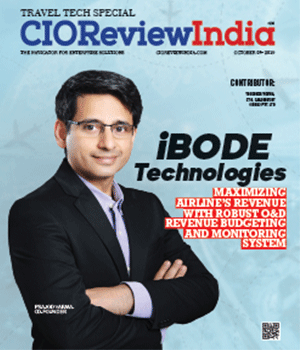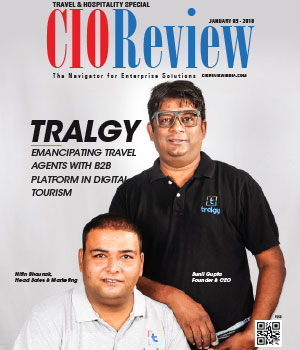
The New Reality for CIOs
Rebecca Parsons, CTO, ThoughtWorks
 No CIO is surprised anymore by major changes in the IT landscape, given the rapid pace of change over the last few years. Over that time period, the Cloud has become increasingly viewed as the default platform; mobile technology is becoming the default pathway to access networked services; data increasingly dominates conversations about how to better deliver customer satisfaction; security, privacy, and data protection are increasing topics of conversations outside of IT and compliance departments; and the rate of adoption of agile software development techniques and continuous delivery are fundamentally changing the relationship between businesses and their IT organizations. The impacts on the CIO from these shifts are broad ranging.
No CIO is surprised anymore by major changes in the IT landscape, given the rapid pace of change over the last few years. Over that time period, the Cloud has become increasingly viewed as the default platform; mobile technology is becoming the default pathway to access networked services; data increasingly dominates conversations about how to better deliver customer satisfaction; security, privacy, and data protection are increasing topics of conversations outside of IT and compliance departments; and the rate of adoption of agile software development techniques and continuous delivery are fundamentally changing the relationship between businesses and their IT organizations. The impacts on the CIO from these shifts are broad ranging.
Conway’s Law in Action
Melvin Conway observed in 1968, in what has come to be called Conway’s law, that “… organizations that design systems … are constrained to produce designs which are copies of the communication structures of the organization”. We repeatedly see the impacts of Conway’s law in difficult integrations and even in the design of many customer-facing websites, where the design reflects the internal organization more than the view from the customer perspective. However, Conway’s law can also be used in reverse. This Inverse Conway maneuver, as we’ve taken to calling it, involves redesigning the organization to better reflect the desired systems architecture. Breaking down larger development teams into smaller, business capability focused teams work well in producing a microservices architecture that can be more responsive to change. Integrations between different systems can be simplified by bringing the teams responsible for those systems closer together. Proper understanding of Conway’s law allows us to create organizations that ultimately deliver better systems for customers and the organizations.
Where’s the Centralization Pendulum?
Like many other industries, we have our own set of pendulum swings. One interesting pendulum relates to centralization of IT resources. The mainframe days were highly centralized. Client server brought some level of shift for data, but real decentralization began with desktop workstations and user software like Excel and Access that allowed employees to create applications without the involvement of IT. Applications became business critical and the disadvantages of such systems became more pronounced.
Cloud occupies quite an interesting point in the centralization debate. Cloud in some ways is a move back towards centralization, with code and data residing in a logically centralized place, even if it’s distributed across data centers. However, the low barrier to entry for getting up and running on the cloud means we are again seeing departments working around their IT organizations by utilizing the cloud, various PaaS and SaaS providers.
While CIOs have many reasons to be concerned about the rise again of such user-provisioned applications, at least the infrastructure vulnerabilities of the past in these situations are no longer an issue. This resurgence, though, also points to the fact that IT organizations still are not seen as responsive enough to the needs of their business customers. Businesses increasingly require quicker turn around for new application functionality, something to which IT organizations will need to respond.
The Promise of Continuous Delivery
Many factors contribute to the cycle time for releases, and there are many issues to resolve to decrease that cycle time, including problematic deployments, infrastructure issues, brittle code and lengthy regression test cycles. Continuous delivery addresses aspects of all these issues, although admittedly the journey to achieving continuous delivery is often a long one.
An important goal of continuous delivery is to make systems deployments boring. The celebration after a deployment should be about the functionality delivered, not the lack of a major systems outage. We can only achieve this, with a focus on automation of provisioning, configuration, build, deployment and testing across the infrastructure and applications. Continuous delivery allows the deployment decisions to depend more on business considerations than technology considerations. While the journey to full continuous delivery is a challenging one, the steps along the way all bring significant value as they are achieved.
Data Privacy and Security
Data and analytics are becoming crucial as market differentiators as organizations look for better ways to satisfy their customers. However, high profile data breaches are also becoming more frequent. Additionally, customer expectations and concerns about their privacy are increasing. Balance point of these factors change constantly and our organizations must adapt as the landscape evolves.
IT is the Business
More and more businesses understand that technology now plays a much greater role in the delivery of goods and services to customers. Regardless of industry, most businesses really are technology organizations. The role of the CIO must therefore evolve to properly meet the needs of these new technology businesses.
CIO Viewpoint
Why Foolproof Facial Recognition Is Key Against...
By Joseph Sudheer Thumma, Global CEO & MD, Magellanic Cloud
National Technology Day 2025: Powering Progress...
By CIOTech Outlook Team
Aligning IT Roadmap with Business Objectives: A...
By Subhash singh Punjabi, CISO & Head Enterprise Architecture, Deepak Fertilisers & Petrochemicals Corporation Ltd
CXO Insights
COVID Crisis for Hotels: How to Plan Forward
By Siddharth Goenka, MD Octave Hotels & Founder, Aiosell Technologies
Data And Automation In The Hotel Industry
By Jason Michael Fawaz, Vice President of Revenue at Hawkeye Hotels
Key Trends Shaping Travel Tech In 2019




.jpg)
.jpg)
.jpg)



